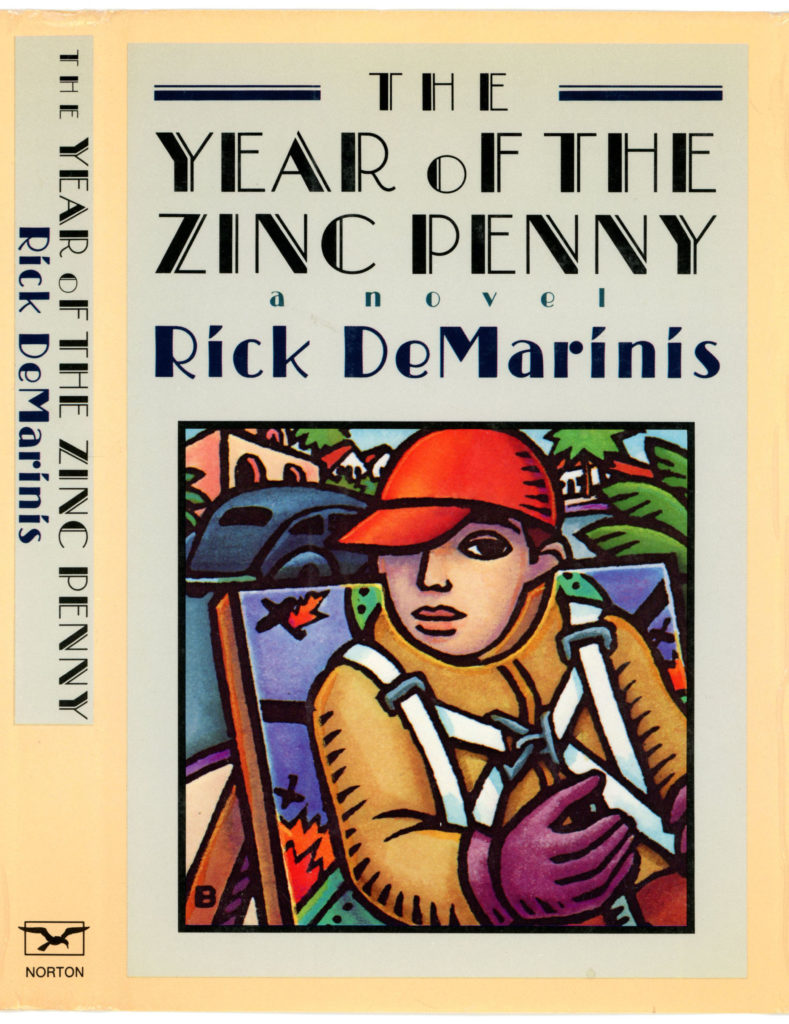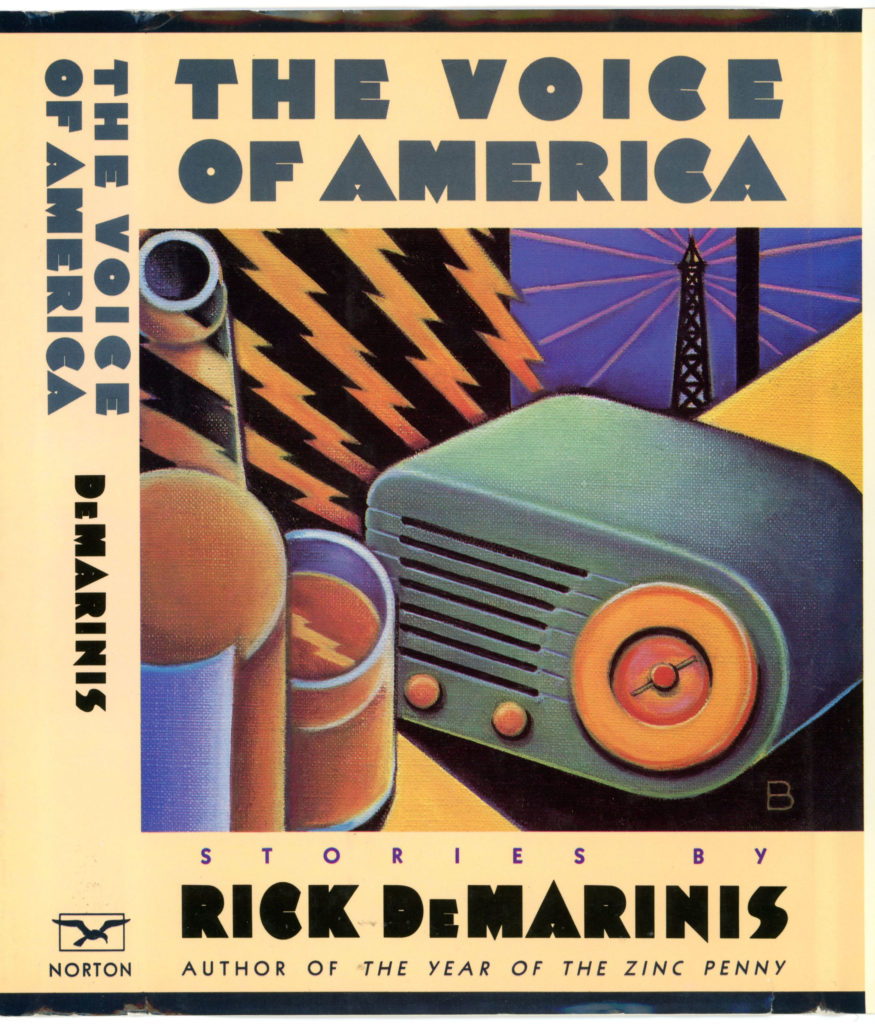Created in April of 2018, this post displays Anne Bascove’s cover art and Jerry Bauer’s portrait of Primo Levi, for Summit Books’* 1986 edition of the Levi’s The Monkey’s Wrench. Being that the post has long lain “dormant”, it’s now enhanced with Alfred Kazin’s review, which appeared in The New York Times Book Review in October of that year.
Aside from the insight offered by Mr. Kazin, his essay, typical of the lengthier items in the Times’ Book Review, is accompanied by a illustration. In this case, artist Steven Madson depicts Levi’s central character “Faussone” – an oil-derrick rigger from Turin – represents and embodies Levi’s interwoven themes of nature and science, and the intersection of human physicality with the natural world.
*Then a division of Simon & Schuster.
______________________________
“With Malice Aforethought”
Cloistered
The Helper
The Bold Girl
Tiresias
Offshore
Beating Copper
Wine and Water
The Bridge
Without Time
The Bevel Gear
Anchovies I
The Aunts
Anchovies II
 (Photograph of Primo Levi by Jerry Bauer)
(Photograph of Primo Levi by Jerry Bauer)
______________________________
 ________________________________________
________________________________________
Life and Steel: A Rigger’s Tale
THE MONKEY’S WRENCH
By Primo Levi.
Translated by William Weaver.
174 pp. New York: Summit Books. $15.95.
By Alfred Kazin
The New York Times Book Review
October 12, 1986
AN Italian Jewish chemist who is a survivor of Auschwitz and was for 30 years the manager of a paint factory has in his quiet way turned out to be one of the most valuable writers of our time. After 10 months in Auschwitz, Primo Levi was carted off to the Soviet Union before his liberators could manage transportation for him back to Italy. By the time Mr. Levi got home to Turin, he had experienced so much degradation and exile that it is astonishing to find in his books “Survival in Auschwitz” and “Moments of Reprieve” writing consistently objective, sober, all-observant and even witty. In the tormented literature of the concentration-camp universe, Mr. Levi represents something rare and astringent: his training as a scientist, the reflex resistance to evil offered by a man with nothing on his side but an indestructible belief in reason.
As a chemist who was drafted into one of three I.G. Farben laboratories at Auschwitz, Mr. Levi was spared the gas chambers. His work, lifting him above the starvation and daily horror with which he still had to live, made him realize how much work itself can be man’s salvation. With his passion for chemistry and his ability to aid in Italy’s industrial renewal after the war, he attained a special sense of homo faber, man as maker and craftsman, a creature often elevated only by his skills. This became explicit in his wonderful series of autobiographical tales, “The Periodic Table,” which wove together the intimate relation of man to the chemical elements with accounts of his own scientific inquiries.
“THE MONKEY’S WRENCH” is an equally unexpected book, more genial and even amusing than its predecessors. It consists for the most part of monologues, each a tale of hazardous work, by a character more or less fictional – Faussone, a professional rigger of derricks for oil exploration, bridges, all sorts of superheavy industrial equipment. Faussone is called to jobs in Calabria, Alaska, Africa, India. He is a rough-talking character, cocky and irreverent, a womanizer when he has the time, a pain to his stiff-necked maiden aunts back in Turin. Talking to Mr. Levi as his recorder and not altogether trustful of writers, he struts his way through one hair-raising assignment after another, unsure that he should be telling all this. (The excellently responsive translator, William Weaver, had quite a job of turning Faussone’s swaggering street expressions in Piedmontese dialect into such energetic English. Faussone often sounds like a New York cabbie looking for someone to punch.) Mr. Levi, feeling enriched by Faussone’s roughness, is getting everything down as the best current example of man’s dedication to work he is good at.
In “The Periodic Table,” Mr. Levi lamented the excessively intellectual training his Jewish family fostered. “What were we able to do with our hands? Nothing, or almost nothing … Our hands were … regressive, insensitive: the least trained parts of our bodies … they had learned to write, and that was all. [They] were unfamiliar with the solemn, balanced weight of the hammer, the concentrated power of a blade, too cautiously forbidden us, the wise texture of wood, the similar and diverse pliability of iron,-lead, and copper If man is a maker, we were not men; we knew this and suffered from it.”
By contrast, Faussone boasts of every risk he has taken, exalts the physical dangers he has passed through. Mr. Levi, quietly listening, open to every detail and to the man’s resilient, showy character, makes it clear that getting Faussone squarely on the page is also hard, skillful labor. Like the “monkey” (actually an ape) who in one unnamed country watched Faussone at work so closely that he tried to imitate him (almost ruining the job), Mr. Levi means to convey Faussone’s skill in all its risk, bravado and physical exhilaration. Of course he brings a writer’s irony to Faussone’s boastful tales, but he is also humble: “Certain feats you have to perform in order to understand them.”
Mr. Levi is a bit of mystery to Faussone: “I swear, you really want to know everything.” “But you know something? You’re quite a guy, making me tell these stories that, except for you, I’ve never told anybody.” Faussone is generally full of himself. Recounting a monstrous assignment in Alaska – rigging a derrick with platform to be hauled out to sea – he complains “they never find oil in great places, say at San Remo or on the Costa Brava. Not on your life.” But he admits “I don’t like staying in the city. What I mean is, I can’t be in neutral. You know, like those engines that have the carburetor a bit off, and if you don’t keep gunning them, they die on you, and you risk burning the points.”
The derrick in Alaska, lying on its side unfinished, was 250 feet long. Faussone could not understand the head engineer, “because he talked without opening his mouth; but, you know, in America they teach them that in school: that it’s not polite to open your mouth.” All operations had to be done on a set day and hour because of the tide. While waiting for the tide to turn, Faussone went off for a ride; he was caught in an Alaskan snowstorm and reflected on the contrast between his adventurous life and that of his coppersmith father, forever banging away at his sheets of metal.
Assembled on its side, Faussone’s derrick was mounted on three sledges resting on ramps of reinforced concrete and steel. Faussone relishes every detail of the trapezoid with six legs, three of which were thicker than the others – floats. The platform was to be slipped onto steel barges that worked as pontoons. Before these could be brought up, the waves became too high, work was suspended, and the “redskin” member of his crew invited Faussone home. There “I realized he was motioning me to go to bed with his wife … In his tribe this was the custom, to offer your wife to your superiors. But (the other workers} said I was right not to accept, because these people washed only with seal grease, and not that often.”
The monster structure was moved out and set on its legs in the midst of a sea that tilted the platform like a ship about to sink. “We finished the job all the same, but you know how it is: as a rule I want to do my work with a bit of class.” Faussone, “the big expert who has been brought specially from the other side of the world,” with his socket wrench hanging from his belt as if it were the sword of knight “in olden times,” is now a monkey himself, vomiting into the sea from a great height.
There is a wonderful description of a “laying-bridge” on a job in Calabria that “reminds you of a pregnant animal as it moves from pier to pier… I don’t know why, but seeing huge things move slowly and quietly, like … a ship setting out, has always had an effect on me.” His most hair-raising assignment was in India, where the Dakota flying him to the job site landed with a hop, skip and jump in order to drive off vultures. “They looked like huddled-up old women … in India a thing always looks like something else.”
He had been hired to draw the cables of a suspension bridge. The piers already in place looked shaky, the river, even when it was low, carried so much sand that the excavations kept filling up as soon as they were dug. Then the river broke through the embankment on one side; water poured in “like a mean animal bent on doing harm.” The Indian laborers on the job had their own problems; “there was one with a sixteen-year-old son who was already shooting dice and his father was worried because the boy always lost.” When the cables were in place and it was time to lay the deck, a terrific wind came on. “Something was happening that you wouldn’t believe. It was like, in that breath of wind, the bridge was waking up.” The bridge began to move vertically, rippling from one end to the other, and as the vertical suspensions snapped, the noise resembled cannon shots. When everything stopped, “it was like a photograph, except the river kept on flowing as if nothing had happened … It was like somebody had wanted to do all that damage and afterward was satisfied.”
THE book ends in the Soviet Union. Mr. Levi’s factory had contracted with a Soviet food directorate to make impermeable enamel linings for cans. Everything goes well on the Italian side, but in the Soviet Union the enamel does not hold up. Recounting his post-Auschwitz experiences in the Soviet Union in “Moments of Reprieve,” Mr. Levi, weary of politics, made a point of emphasizing the Russian character, which he often found unaccountable. As he seeks to discover what happens to enamel in Russia that does not happen in Italy, he finds the Russians kind, madly hospitable, as erratic as the soldiers after the war who took him there before sending him home to Italy.
After a lot of detective work, the problem with the enamel turns out to be the rags the Russians use to clean it. This is Mr. Levi’s last adventure as a chemist. “With nostalgia, but without misgivings,” he says that he has chosen “another road, since I had that option and still felt strong enough: the road of a teller of stories … Having spent more than thirty years sewing together long molecules presumably useful to my neighbor and performing the parallel task of convincing my neighbor that my molecules really were useful to him, I might have learned something about sewing together words and ideas, or about the general and specific properties of my colleague, man.”
Ezra Pound said that more writers fail from lack of character than from lack of intelligence. Everything in Mr. Levy’s excellent book represents an eminently healthy character expressing itself as curiosity, intelligence, a love of man at his positive best – man at work.
Alfred Kazin is the author of “An American Procession” and “A Writer’s America,” a forthcoming study of landscape in American writing.
March 9, 2018













